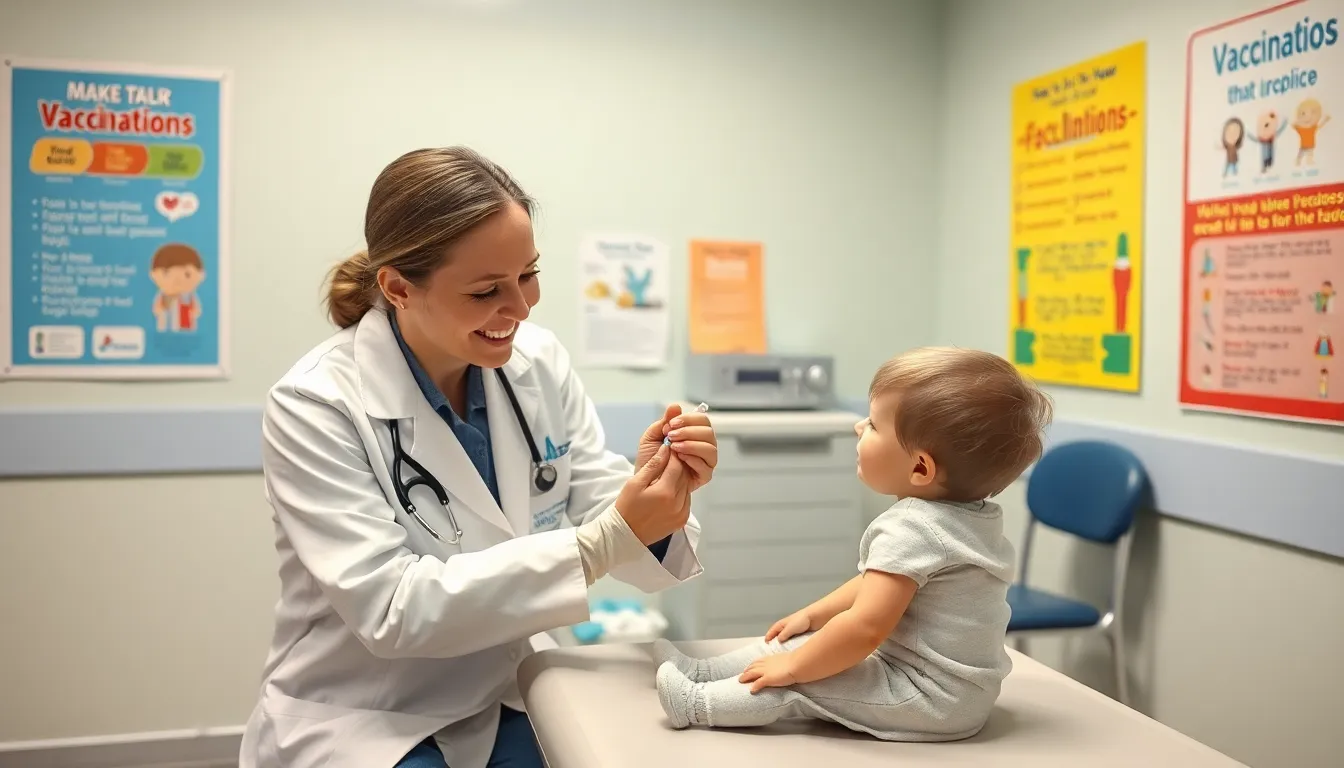Table of Contents
ToggleWhen it comes to chickenpox, most people would rather dodge those itchy spots than embrace them. Enter the varicella vaccine, a superhero in the world of disease prevention. With two doses under your belt, you can wave goodbye to the days of scratching like a cat in a room full of laser pointers.
But what’s the deal with those two doses? Is it just a clever marketing scheme to get you back in the doctor’s office? Not quite! The first dose kicks off your immune response, while the second dose is like the cherry on top, ensuring long-lasting protection. So let’s dive into the nitty-gritty of varicella vaccine doses one and two, and discover why they’re essential for keeping those pesky chickenpox at bay.
Overview of Varicella Vaccine
The varicella vaccine effectively prevents chickenpox, reducing the incidence and severity of the disease. This vaccine is administered in two doses, ensuring strong and lasting immunity.
Importance of Vaccination
Vaccination plays a crucial role in public health, particularly for chickenpox. It prevents the spread of the varicella virus within communities. By immunizing children, families can avoid outbreaks that might lead to complications, such as pneumonia and encephalitis. High vaccination coverage contributes to herd immunity, protecting those who cannot be vaccinated due to medical reasons. The Centers for Disease Control and Prevention emphasizes that two doses provide the best protection against chickenpox.
Types of Varicella Vaccines
Various types of varicella vaccines are available, primarily the live attenuated vaccine. This form contains weakened live virus, prompting an immune response without causing the disease. The combination vaccine, MMRV, includes measles, mumps, rubella, and varicella, simplifying the vaccination schedule for healthcare providers and caregivers. Both vaccines require the same two-dose schedule to maximize effectiveness. Authorities recommend these strategies for optimized protection against chickenpox and accompanying illnesses.
Varicella Vaccine Dose 1

Dose 1 of the varicella vaccine provides the initial protection against chickenpox. This dose kickstarts the immune response necessary for effective defense.
Recommended Age for Dose 1
The varicella vaccine is typically administered at 12 to 15 months of age. Pediatricians often recommend this timeframe to maximize immunity development during early childhood. Children who receive their first dose within this age range can build a strong foundation for protection against the varicella virus. Healthcare providers can address questions regarding vaccination schedules and any concerns about potential reactions.
Efficacy of Dose 1
Efficacy of Dose 1 approaches 95 percent in preventing chickenpox. This impressive effectiveness demonstrates the vaccine’s ability to significantly reduce the incidence of the disease among vaccinated populations. Breakthrough infections can occur but are usually less severe compared to illnesses in unvaccinated individuals. Long-term studies support the vaccine’s role in controlling outbreaks and safeguarding community health by lowering transmission rates.
Varicella Vaccine Dose 2
The second dose of the varicella vaccine is essential for optimal immunity against chickenpox. Following the first dose, this booster ensures an enhanced and sustained immune response over time.
Timing of Dose 2
Dose 2 is recommended between 4 to 6 years of age. Administering the second dose during this period helps solidify immunity as children enter school. It’s often given before children start kindergarten to ensure they are well protected against chickenpox. If a child misses this window, they can receive Dose 2 at any time, provided they are at least 3 months past Dose 1.
Benefits of a Second Dose
Receiving a second dose reinforces protection against chickenpox. Efficacy increases significantly; studies show the effectiveness improves to around 98 percent after Dose 2. This second dose also reduces the risk of breakthrough infections, which, while less severe, can still occur with just one dose. Vaccination helps prevent outbreaks within schools and communities, contributing to greater public health.
Safety and Side Effects
The varicella vaccine is generally safe, but it can cause some reactions.
Common Reactions
Mild reactions commonly occur after vaccination. These may include soreness at the injection site, mild fever, or a rash. A small percentage of vaccinated individuals might experience a few spots resembling chickenpox, but these are typically less severe than the disease itself. Reactions usually resolve within a few days without any medical intervention. The Centers for Disease Control and Prevention notes these side effects are generally manageable and indicate the body’s immune response to the vaccine.
Rare Adverse Effects
Serious adverse effects are rare but can occur. Anaphylaxis, a severe allergic reaction, represents an extreme example and requires immediate medical attention. Other potential rare effects include thrombocytopenia, or low platelet count, leading to increased bleeding risk. Neurologic complications, though infrequent, have also been reported. Families should consult healthcare providers if they observe unusual symptoms following vaccination. Keeping thorough records of vaccination history aids in ensuring safety and effectiveness in immunization efforts.
The varicella vaccine is a vital tool in protecting against chickenpox and its complications. Administering both doses ensures robust immunity and contributes significantly to community health. By following the recommended schedule for vaccination, families can help prevent outbreaks and safeguard those who are unable to receive the vaccine. The benefits of the varicella vaccine extend beyond individual protection, creating a healthier environment for everyone. Staying informed and up to date with vaccinations is essential for maintaining public health and preventing the spread of infectious diseases.










